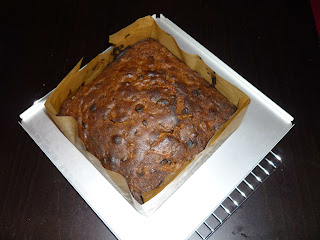 |
| Calla, showing the curve of the petal |
In between baking the fruit and madeira cakes, I've been making sugar flowers. There are two lots.
First the favours which will be callas made out of sugarpaste, as in
this post, but everyone is getting one each in the end as three hundred sugar callas is too many for me to make. I've done the sticks and the stamens for these (and I still haven't done a tutorial. Whoops.)
Then I decided what flowers I was going to put in the spray to go on the cake. These are made out of flower paste, which is less brittle than sugar paste (but also less tasty!). I decided on freesias, lisianthus, carnations, calla lilies and rose leaves as these will all be in the actual flowers as well.
I've been making these flowers for the past week, working for a few hours each day, and I finished making the individual flowers today. Then I need to make them up into stems, and then assemble the stems into a spray.
 |
| Individual freesia buds & flowers taped together into a spray |
The tutorial I made for freesias is
here, though I do now have a freesia cutter with three separate petals, and it's easier & quicker than the method I used in the tutorial. I did the biggest freesias using the original method as I needed bigger petals than the freesia cutter made.
The carnation tutorial I made is
here, but instead of just folding a stamen I wrapped florists tape round a hooked wire to have a firmer base to start from. As I am making carnations which are white with pink tips, I also painted the edges of the petals with pink food colouring using a fine (no.1) paintbrush once the flowers had dried.
The callas I made on wires rather than wooden sticks so that I could shape the wires in the spray. I used three gauge 18 wires, taped together with flower tape all down the length. This also made the wires green as my gauge 18 wires are white! I found that the inside of a kitchen roll is good to rest them on while they dry, as they curve properly at the back of the flower. A large rolling pin would be equally good.
 |
| Spray of lisianthus with heart-shaped leaves |
As for the lisianthus (latin name is Eustoma), which look like
this in real life, I found a rather complicated tutorial
here, which I followed to make the stamens etc and then simplified. Instead of wiring each petal separately, I used a gauge 18 wire for the stem and then made the flower in a similar method to the first flowers I made (
remember these?), wrapping the petals around the stem before glueing the final one. This worked for some of them, but for others I hadn't made a big enough lump for the ovary so i had to add extra sugarpaste to attach the petals to. This is working so far. The lisianthus are white with purple edging, so I painted the edges of each petal with purple food colouring once the flowers had dried. This helps to highlight each separate petal, though it takes a while as you have to keep it neat!
As a guide, this is what I have made and how long roughly each bit took:
 |
| Spray carnations with rose leaves |
Freesias - 2 stems, on each stem 1 small bud, 2 bigger buds, 1 nearly open bud, 2 open flowers, 1 bigger flower. Altogether these took me about 4 hours over two days.
Leaves - 18 rose leaves (some big, some small), 16 heart-shaped lisianthus leaves. These took two or three hours.
Carnations - 10 individual flowers (to be made into 5 stems with two flowers on each). These took about two hours to make, and another two hours to paint the edges of the petals.
Callas - 2 individual calla lilies, these didn't take very long at all but I had to let the stamens dry overnight so probably two half-hour slots would make these.
Lisianthus - these took the longest, as I hadn't made these before. Making the stamens was quite fiddly (though it could probably be simplified to make it slightly less botanically accurate). I think these took at least 4 hours, with another hour to paint the edges of the petals.
Now I've updated with pictures of the flowers, you can have more of an idea of what I've done.





















































